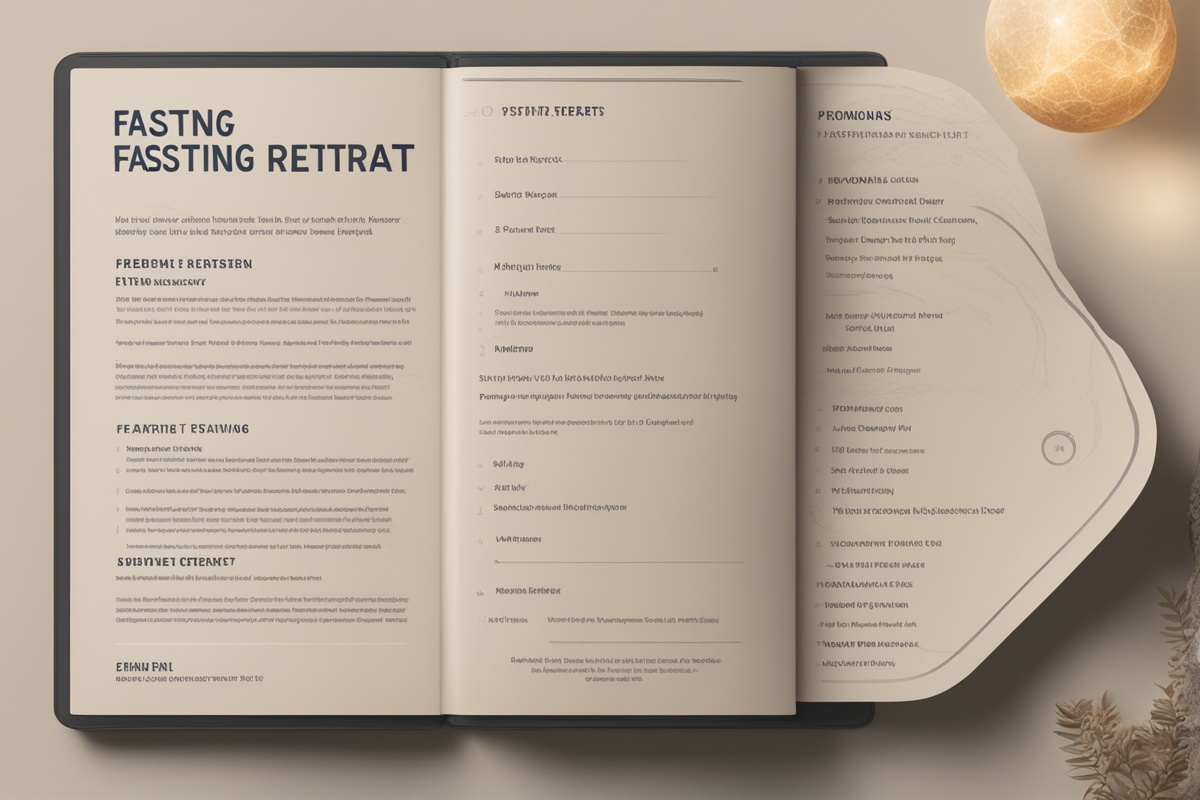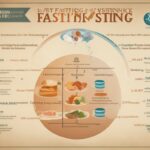Have you ever felt the need to hit the reset button on your health and well-being? In our fast-paced, overindulgent world, fasting retreats are emerging as a powerful way to detoxify, recharge, and reconnect with your body. These immersive experiences combine the ancient practice of fasting with structured support, often in serene, nature-rich environments. Whether you’re a seasoned faster or just curious about integrating fasting into your wellness routine, this guide will walk you through everything you need to know about fasting retreats. From practical fasting tips to the science behind their benefits, let’s explore how stepping away from food can bring you closer to vitality.
What Are Fasting Retreats?
fasting retreats are organized programs, typically lasting anywhere from a weekend to several weeks, where participants abstain from food or follow restricted diets under professional supervision. Often held in tranquil locations like mountain lodges or coastal sanctuaries, these retreats aim to support physical detoxification, mental clarity, and spiritual renewal. Unlike solo fasting at home, retreats offer a structured environment with medical oversight, group activities, and expert guidance on fasting tips to ensure safety and maximize benefits. They may focus on water fasting, juice fasting, or intermittent fasting protocols, catering to various health goals such as weight loss, stress reduction, or chronic disease management.
The Science Behind Fasting and Its Benefits
Fasting isn’t just a trendy wellness fad; it’s backed by a growing body of research highlighting its potential health benefits. When you fast, your body shifts into a state called ketosis, where it burns stored fat for energy instead of glucose. This metabolic switch can promote cellular repair processes like autophagy, where cells remove damaged components, potentially reducing inflammation and the risk of chronic diseases (Mattson et al., 2017). Studies also suggest that fasting can improve insulin sensitivity, lower blood pressure, and support brain health by boosting the production of brain-derived neurotrophic factor (BDNF), a protein linked to cognitive function (Longo & Mattson, 2014). While fasting retreats aren’t a cure-all, they provide a controlled setting to experience these benefits with expert fasting advice to prevent risks like nutrient deficiencies or dehydration.
How to Choose the Right Fasting Retreat for You
With so many fasting retreats popping up worldwide, finding the right one can feel overwhelming. Start by clarifying your goals—are you seeking weight loss, mental clarity, or a deeper spiritual connection? Next, research the retreat’s fasting protocol. Water fasting might be too intense for beginners, while juice fasting or intermittent fasting could offer a gentler introduction. Look for programs with qualified staff, including doctors or nutritionists, to ensure safety. Location matters too; a peaceful, distraction-free environment can enhance your experience. Finally, read reviews and testimonials to gauge the retreat’s reputation. A little homework goes a long way in aligning your expectations with reality. Here are some key factors to consider when selecting a retreat:
- Duration: Shorter retreats (3–5 days) suit beginners, while longer ones (7–14 days) are for experienced fasters.
- Medical Supervision: Ensure there’s on-site support to monitor vital signs and address concerns.
- Cost: Budget for fees, travel, and any additional services like massages or counseling.
- Community: Some retreats emphasize group bonding, while others focus on solitary reflection—pick what resonates with you.
Practical Fasting Tips for a Successful Retreat Experience
Embarking on a fasting retreat is exciting, but preparation is key to making the most of it. I’ve compiled some actionable fasting tips based on expert recommendations and personal insights from retreat-goers. First, ease into fasting before you arrive. Gradually reduce caffeine, sugar, and processed foods a week prior to avoid intense withdrawal symptoms. Hydration is non-negotiable—drink plenty of water leading up to and during the retreat, especially if you’re doing a water-only fast. Pack comfortable clothing and journaling materials to process your thoughts, as fasting often brings emotional clarity. During the retreat, listen to your body; if you feel dizzy or unwell, don’t hesitate to alert staff. Post-retreat, reintroduce food slowly with light meals like broths or smoothies to avoid digestive shock. Here are additional pointers to keep in mind:
- Mental Prep: Set realistic expectations—fasting can be challenging but rewarding.
- Rest: Prioritize sleep and avoid strenuous activity unless guided by instructors.
- Support: Lean on the retreat community or facilitators for motivation during tough moments.
- Post-Fast Plan: Have a refeeding strategy to maintain the benefits of your fast.
- Patience: Give your body time to adjust; results like improved energy may not be immediate.
Potential Risks and How Retreats Mitigate Them
While fasting offers numerous benefits, it’s not without risks, especially if done improperly. Prolonged fasting can lead to electrolyte imbalances, fatigue, or even more serious conditions like hypoglycemia in susceptible individuals (Johnstone, 2015). People with pre-existing conditions such as diabetes or eating disorders should consult a healthcare provider before participating (American Diabetes Association, 2020). Fasting retreats address these concerns by providing medical supervision and tailored programs. Staff monitor participants for signs of distress, adjust fasting protocols as needed, and offer nutritional guidance for safe refeeding. This structured support sets retreats apart from DIY fasting, making them a safer choice for most, especially those new to fasting strategies.
Why Fasting Retreats Are More Than Just Not Eating
Fasting retreats go beyond abstaining from food—they’re holistic experiences designed to nurture mind, body, and spirit. Many programs include yoga, meditation, and educational workshops on fasting benefits to deepen your understanding of the practice. The communal aspect fosters a sense of belonging, as you share challenges and breakthroughs with like-minded individuals. Being in nature, away from daily stressors, amplifies the mental reset that fasting can trigger. Research shows that such environments reduce cortisol levels, the stress hormone, enhancing the overall impact of the fast (Ulrich et al., 1991). Whether it’s a silent meditation session or a group hike, these elements make fasting retreats a transformative journey, not just a diet.
As we’ve explored, fasting retreats offer a unique opportunity to step back, detoxify, and rediscover balance in a supportive setting. With the right preparation and mindset, guided by practical fasting tips, you can unlock profound physical and mental benefits. Remember, it’s not about deprivation but about giving your body a chance to heal and reset. If you’re considering a retreat, take the time to research and choose one that aligns with your needs. Have you been to a fasting retreat, or are you thinking about trying one? Share your thoughts or questions below—I’d love to hear from you and help guide your fasting journey!
References
- American Diabetes Association. (2020). Nutrition therapy for adults with diabetes or prediabetes: A consensus report. Diabetes Care, 43(5), 731-742.
- Johnstone, A. (2015). fasting for weight loss: An effective strategy or latest dieting trend? International Journal of Obesity, 39(5), 727-733.
- Cell Metabolism, 19(2), 181-192.
- Mattson, M. P., Longo, V. D., & Harvie, M. (2017). Impact of intermittent fasting on health and disease processes. Ageing Research Reviews, 39, 46-58.
- Ulrich, R. S., Simons, R. F., Losito, B. D., Fiorito, E., Miles, M. A., & Zelson, M. (1991). Stress recovery during exposure to natural and urban environments. Journal of Environmental Psychology, 11(3), 201-230.






